This $108 Bamboo Home Is a Lifeline for Future Flood Victims
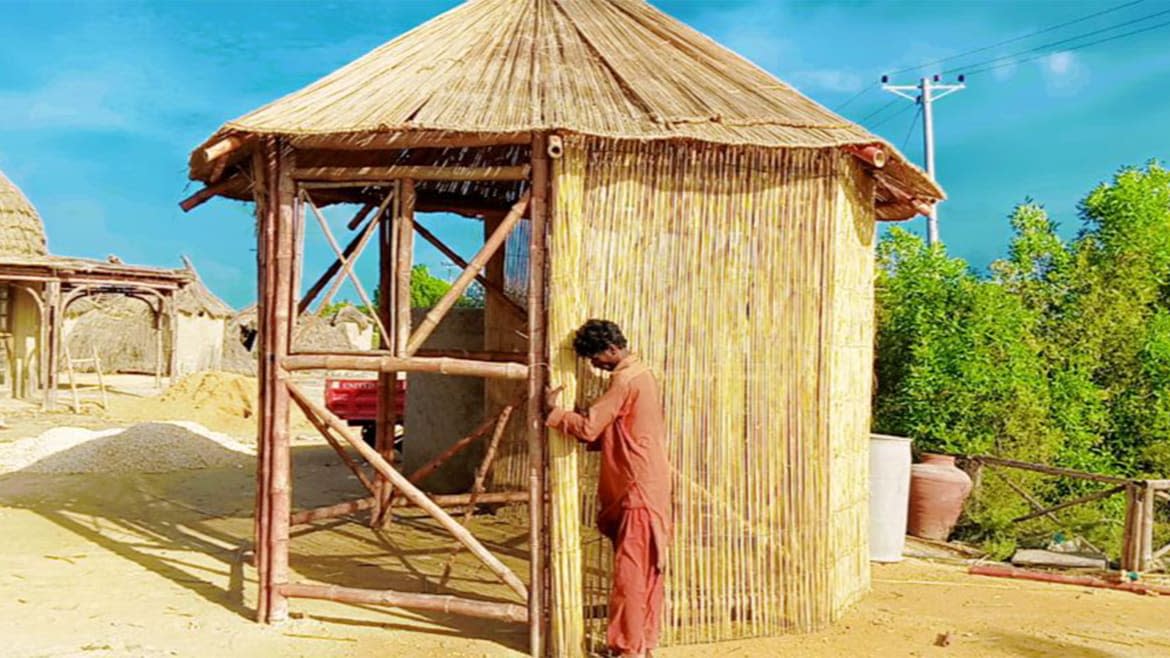
After leaving more than 100 people dead and causing an immense amount of devastation throughout the Gulf Coast and Southeast, Hurricane Ian has reminded Americans once again of the havoc extreme floods can cause to our communities. But Ian wasn’t even the worst lesson in flood dangers this year—nor was the extreme rainfall in Seoul that left Parasite-style basement homes flooded in August.
Halfway around the globe, Pakistan is still reeling from catastrophic flooding that has affected 33 million people, killed 1,600, and left one-third of the country submerged. Torrential rains swept away buildings and crops, sending water and debris barreling through town squares as residents fled for higher ground, leaving millions in need of food and shelter. It was perhaps the most damaging weather event in a year of record-shattering rain, heat and drought that exceeded even the most dire predictions of climatologists.
The weather patterns brought on by our hotter, more volatile world are disproportionately affecting Pakistan, whose geography leaves its 220 million people vulnerable to the worst effects of climate change despite contributing just 0.3 percent of historic carbon emissions, according to the Global Change Data Lab. Pakistan is billions of dollars in debt, and the United Nations has thus far collected less than $100 million in flood aid, a far cry from the $816 million it asked for and the $40 billion its government estimates it needs to restore damaged communities. There’s not much people can do for immediate relief, aside from rebuilding their own communities to be more resilient.
Yasmeen Lari, co-founder of the Heritage Foundation of Pakistan, switched her focus to humanitarian work after a long career as Pakistan’s first practicing woman architect. After parts of Pakistan were devastated by a 7.5-magnitude earthquake that hit neighboring Afghanistan in 2015, Lari, now 81, started experimenting with shelters that could be constructed from local materials, disassembled and moved, and required minimal building expertise.
Her nonprofit has now developed one design for zero-carbon, low cost shelters that are made from locally sourced bamboo. The shelters are a potential lifeline for millions of Pakistani flood survivors who are still living in tents or temporary homes. Government officials and farmers warn that millions could face severe food shortages and become vulnerable to waterborne diseases. “I don’t think anyone ever expected the kind of calamity that’s befallen this country,” Lari told The Daily Beast. “It’s a very bleak scenario right now.”
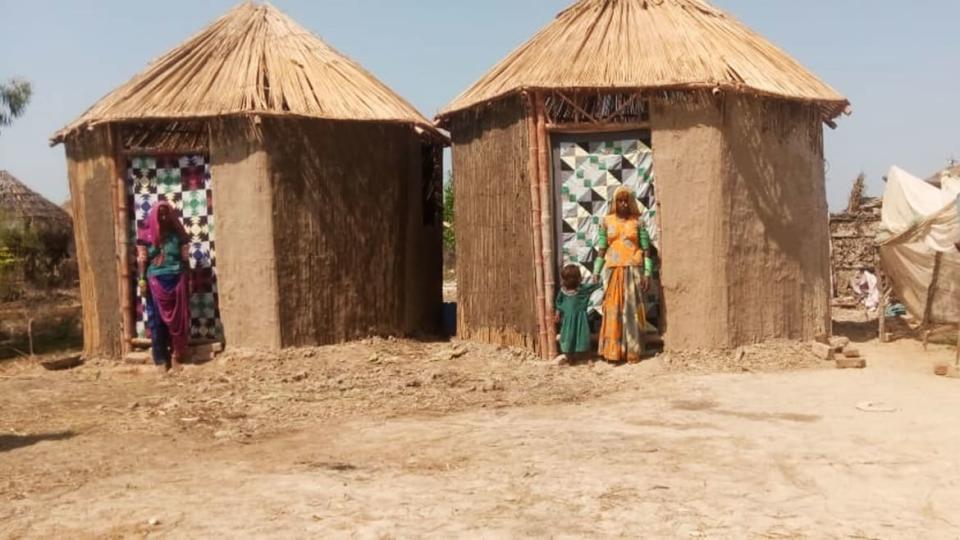
They’re also a display of a disaster relief model that could take root anywhere and empower communities—even poorer ones—to decide what’s best for them. Lari’s nonprofit has provided direct remote training to students in Bangladesh and elsewhere in the Global South, and one community in South Africa is planning to build flood shelters like those in Pakistan. “If I can just train people all over, then it starts happening,” Lari said.
The homes can be built in just a few hours, then dismantled and moved when families relocate from high ground to their original villages, where they’re attached to foundations and turned into permanent shelters by adding matting and extra insulation. They can be built in a variety of different forms, depending on circumstances. The most simple emergency structure is an immediate four-sided shelter, eight feet on each side, for a single family that costs just around $10. An accompanying “eco-toilet” bamboo outhouse costs an additional $20 to build, and can be shared between two families. A slightly larger eight-sided structure called “Octa-Green” can be built for about $108, covered in reed matting and held together by a bamboo pole in the center.
The new concept is just half of the work Lari and her team have put in. Heritage Foundation is also teaching thousands of people remotely to build shelters, starting community-led initiatives that focus on empowering women and inspire a wider culture of giving. People in the most affected areas “understand the hurt others are feeling, and they want to go and help,” Lari said. Those still stranded in flood-hit areas can follow DIY videos on the foundation’s YouTube channel. It’s a form of instant disaster relief, helping anyone with a mobile connection immediately make use of materials they may already have on hand.
Heritage has helped build more than 45,000 structures from mud and bamboo, including large community buildings and two-story homes. More than 400 of the ultra-low-cost shelter homes have been constructed since Pakistan’s rains began in June, and enough bamboo panels for 800 more have been prefabricated. It’s also currently working with the Bank of Punjab to arrange a venue in southern Pakistan where artisans from at least 10 villages will be remotely trained to build the structures, which it hopes will produce around 1,500 additional shelters per month.
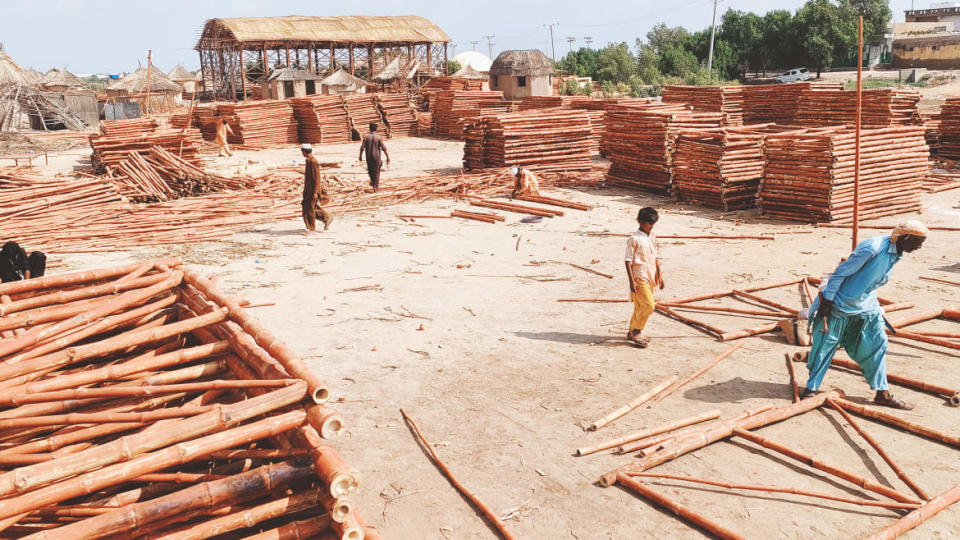
That’s a small fraction of what’s needed, but the track record of the temporary shelters has caught the interest of people in need of resilient homes. The nonprofit has not yet reached every flood-affected area, but it said that out of 800 shelters built in 2018, along with an additional group built in 2014, all survived the floods with only slight damages to finishes. Homeowners have sent in photos of their surviving structures while neighboring “pakka” houses made of brick and cement “collapsed into the water,” Lari said.
That success is due in great part to the use of cheap, plentiful, and locally sourced bamboo rods that can be woven into panels and held together with ropes. “Bamboo is really an amazing material,” Lari said. “I always believed in it, but I did not know how it would really survive.” She first designed the shelters for an earthquake relief area, only to find they also performed well in flooded areas. “Everything is connected together, so everything moves together,” she said.
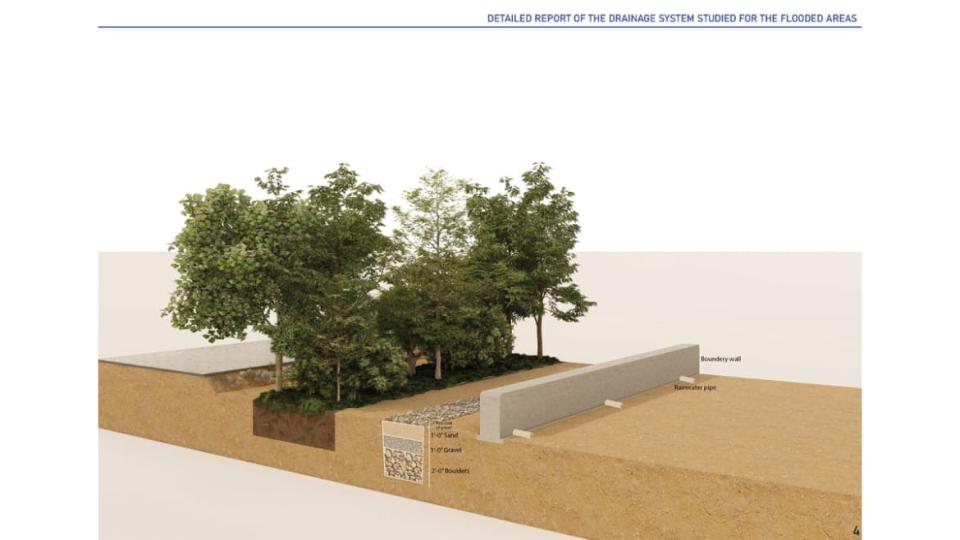
Although it’s a cheap and natural resource, bamboo has a higher strength-to-weight ratio than steel and many mixtures of concrete, while also being lighter and more flexible. Even when floodwaters destroy plaster walls and cause cosmetic damage, the bamboo skeletons remain intact and save lives. “The water may come in,” Lari said, “but the structure will be sound.”
For Lari, these shelters are nearly two decades in the making. After Pakistan was hit by a 2005 earthquake that killed around 75,000 people and caused more than $5 billion in damage, she watched global relief organizations build temporary shelters from high-carbon materials for millions of displaced residents. “Everything was done in concrete and steel girders,” she said. Their failures, and the inability of top-down aid models to engage communities, inspired her to find more successful and sustainable solutions.
Unfortunately, even now, most of the response to this year’s floods continue to fall into the same trappings and misguided strategies that have been utilized for decades. One Chinese company has put up hundreds of prefabricated houses made from imported concrete and steel materials—with each home costing an estimated $8,000 to construct. They’ll provide relief for people in desperate need of shelter, but there’s no guarantee the current wave of prefabricated buildings and relief tents will survive the upcoming winter, let alone future floods. And the amount of money being sunk into these homes saps away investment in other resources that help rebuild communities and get people back on their feet.
“We have to focus on climate-proofing our infrastructure,” said Afia Salam, an environmental journalist who has volunteered with the Indus Earth Trust, another nonprofit that has trained people to build earth and mud houses and pass their skills on to others.
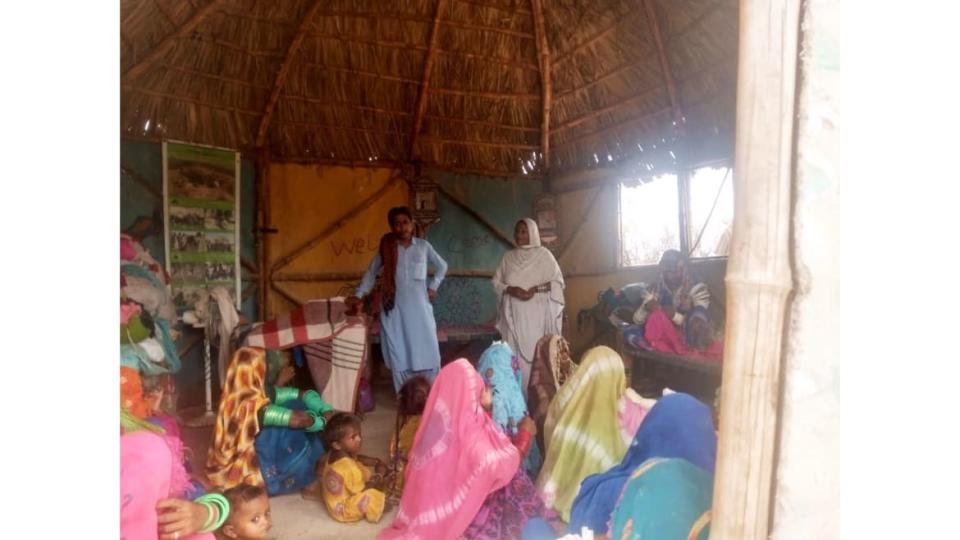
Pakistan is facing the same problem much of the world will grapple with in the coming years: When extreme weather devastates cities, crops and critical infrastructure, can quick-fix relief efforts be combined with rebuilding more resilient communities? The government has called for climate reparations from heavy-polluting Western countries, but even if these wealthy nations fork over billions more in aid, environmentalists warn it must be used wisely. Now, powerful people are “promoting prefab,” Salam said. But calling for more sustainable relief, she acknowledged, is a “very difficult conversation to have when a quarter of your population are just sitting out there on roadsides.”
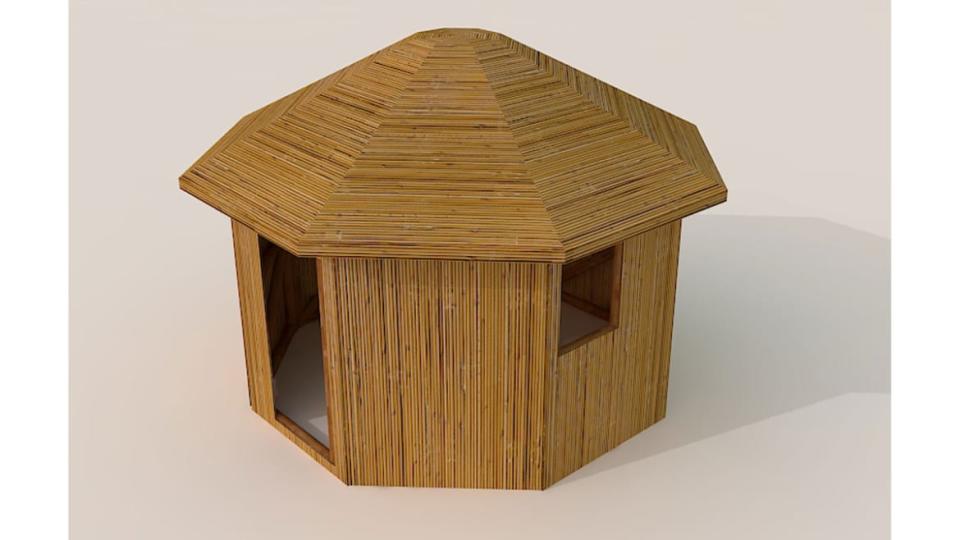
Lari admits Pakistan needs assistance now, but she believes aid must be rooted in communities, especially within women-led initiatives. Her nonprofit built a Zero-Carbon Cultural Center among a cluster of poor communities in Makli, a few hours east of Karachi, where villagers built terracotta tiles that were used to re-pave a street in Karachi’s historic district. “There was so much flooding in Karachi,” Lari said, “but my street remained without flooding.”
The campus and shelters are signposts to Lari’s vision of a more resilient country. Lari envisions zero-waste villages powered by solar panels, sharing eco-toilets and potable water, and cooking with eco-friendly stoves that counter the health and safety risks of open fires. “A lot can be done,” Lari said, “if we just have the understanding and use resources in a better way.”
Get the Daily Beast's biggest scoops and scandals delivered right to your inbox. Sign up now.
Stay informed and gain unlimited access to the Daily Beast's unmatched reporting. Subscribe now.

